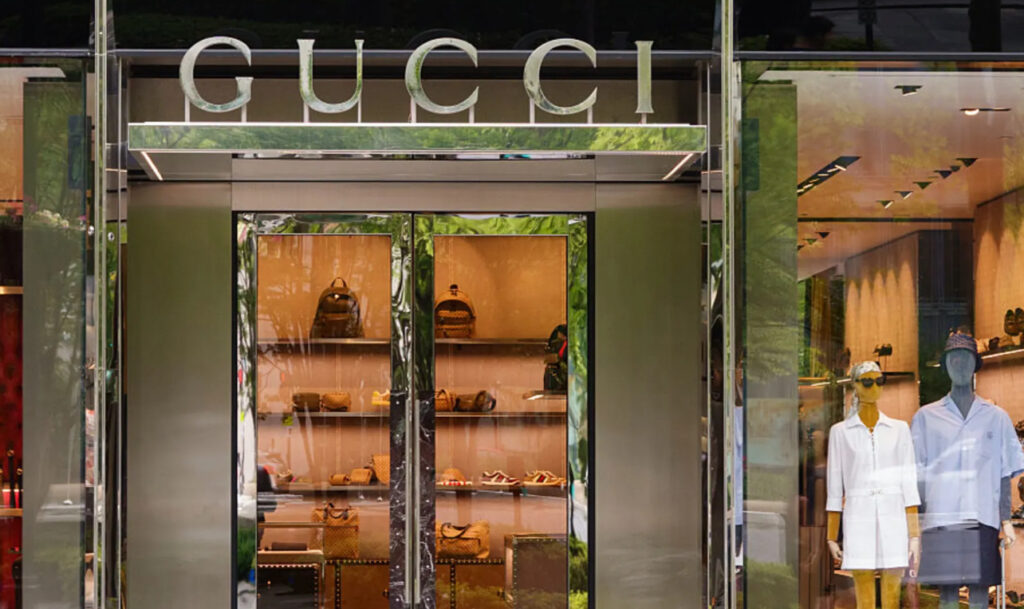French haute group Kering has announced the appointment of Luca de Meo, current CEO of Renault, as its new Group Chief Executive Officer. This decision marks a turning point for the company, introducing leadership from outside the fashion world at a time when several of its flagship brands, especially Gucci, are struggling with relevance and revenue. De Meo will take office on September 15, 2025, while François-Henri Pinault, who has served as both Chairman and CEO since 2005, will retain his role as Chairman.
This separation of the CEO and Chairman roles is a significant move for Kering and positions the company for a potential overhaul, focusing on brand discipline, operational efficiency, and strategic transformation.
Luca de Meo: Profile of a Turnaround Specialist
Luca de Meo is a Milan-born executive with more than three decades of experience in the automotive industry. He holds a degree in business administration from Bocconi University and began his career at Renault in the early 1990s. From there, he moved through roles at Toyota, Fiat, and the Volkswagen Group. Notably, at Fiat, he led the revitalization of the Fiat 500 and Abarth brands. At Volkswagen, he served as global marketing chief and later as President of SEAT, where he repositioned the brand for a younger audience and improved profitability.
In 2020, he became the CEO of Renault, where he launched the “Renaulution” plan. This multi-year strategy was aimed at restoring Renault’s financial health, transitioning toward electric vehicles, and reorganizing its alliance with Nissan. Under de Meo’s leadership, Renault reversed its losses, increased share value, and restructured its operations during a period of industry volatility.
His move from Renault to Kering is one of the most unconventional CEO transitions in recent memory, shifting from industrial manufacturing to high-end fashion. Despite the differences between the two sectors, both rely on global branding, long product development cycles, and complex supply chains — areas in which de Meo has demonstrated proven expertise.
Kering’s Strategic Situation
Kering is best known for owning Gucci, one of the most iconic names in fashion. Over the past decade, Gucci has experienced both highs and lows, including a massive growth phase under former creative director Alessandro Michele. However, recent years have shown signs of fatigue. Gucci’s sales dropped significantly between 2022 and 2024, falling from €10.5 billion to €7.7 billion.
Other brands in the Kering portfolio have also struggled. Saint Laurent has not met its growth targets, and Balenciaga’s reputation took a hit due to controversial marketing. Meanwhile, Kering faces more than €10 billion in debt, due largely to property acquisitions and brand expansion during boom years.
In the past three years, Kering’s market capitalization has declined by over 60 percent. These challenges, paired with shifting consumer behavior and global economic headwinds, have placed pressure on the company to deliver a new strategy.
Rationale Behind the Appointment
Kering’s decision to hire Luca de Meo represents a pivot toward managerial discipline, brand restructuring, and top-down operational refinement. Unlike creative insiders who rise through the ranks of luxury fashion, de Meo brings an outside-in perspective shaped by product lifecycle planning, industrial engineering, and consumer-focused reinvention.
The group is betting that his experience in revitalizing underperforming brands and leading corporate transformations will translate into success in the luxury sector. His track record suggests he can impose financial discipline while still allowing room for creative risk-taking — a balance Kering has struggled to achieve.
Investor response to his appointment was overwhelmingly positive. Kering’s share price surged by over 11 percent on the day the news broke, reflecting renewed confidence in leadership and the potential for structural change.
Key Priorities for de Meo at Kering
Luca de Meo will step into a complex leadership role with a wide range of priorities. Each of these will require careful balance between creative freedom and corporate performance.
Restore Gucci’s Momentum
Gucci, long considered Kering’s engine of growth, needs renewed creative direction and commercial clarity. Under new creative director Sabato De Sarno, Gucci is undergoing a reset that must resonate with both legacy consumers and a younger audience seeking authenticity and subtlety in luxury.
Reinvigorate Other Core Brands
Balenciaga, Saint Laurent, Bottega Veneta, and Alexander McQueen all require strategic attention. Whether through repositioning, marketing reinvestment, or creative leadership changes, de Meo will need to manage a portfolio in varying stages of maturity and public perception.
Rationalize Operations and Debt
Kering’s €10 billion debt load, largely tied to real estate and brand investments, must be restructured to ensure financial flexibility. Streamlining operational costs and eliminating inefficiencies across the group will be vital to long-term health.
Drive Digital and Omnichannel Retail
Kering must improve its performance in digital commerce and use data more effectively to personalize customer experiences. Flagship stores remain essential, but younger consumers increasingly expect seamless integration between online and offline retail.
Expand Global Market Reach
While Asia, particularly China, remains critical to luxury growth, geopolitical uncertainty and consumer hesitation demand a more diversified strategy. Kering must deepen penetration in North America, Southeast Asia, and digitally-native markets.
Lead in Sustainability and ESG
Kering has established itself as a sustainability leader, eliminating fur across its brands and investing in regenerative agriculture. Maintaining leadership in environmental and ethical practices will be central to its brand identity and consumer appeal.
Structural and Governance Implications
By separating the roles of CEO and Chairman, Kering is signaling a modernization of its corporate structure. François-Henri Pinault will remain involved as Chairman but is stepping away from daily management for the first time since 2005. This realignment opens space for de Meo to act independently and without inherited biases in decision-making.
This governance model also reflects broader trends in global companies, where distinct executive and board leadership is favored for accountability, clarity, and adaptability.
Potential Risks
While de Meo brings operational excellence and brand experience, his lack of direct fashion industry exposure poses risks:
- The luxury industry operates on intuition, cultural relevance, and creative risk, often at odds with industrial-style management.
- He must earn trust among designers, brand presidents, and retail leaders accustomed to artistic freedom and symbolic leadership.
- The speed of transformation in fashion may outpace the multi-year strategies that worked in the automotive world.
Furthermore, Kering’s shareholder expectations are high. The surge in share price following his announcement reflects hope, not results. Sustaining that momentum will require rapid wins and long-term delivery.
What Success Might Look Like
Luca de Meo’s tenure at Kering will be judged on multiple dimensions:
- Financial Turnaround: Improved revenue growth and margins, especially from Gucci and Saint Laurent.
- Portfolio Balance: Reduced dependence on Gucci by growing other houses.
- Cultural Cohesion: Building mutual respect between creative and commercial leaders.
- Market Share Growth: Regaining position in China and strengthening in the U.S.
- Operational Discipline: Debt reduction and supply chain improvements.
- Sustainability Leadership: Ongoing leadership in ethical sourcing and climate innovation.
These outcomes will require a delicate blend of bold leadership, restraint, adaptability, and industry respect.
Impression
Kering’s appointment of Luca de Meo as CEO marks a calculated risk and a fresh strategic path. It represents a break from traditional luxury leadership and a recognition that operational excellence and brand relevance are not mutually exclusive.
As he transitions from Renault to the rarified world of couture, de Meo carries both the weight of expectation and the freedom to reshape a global icon. If he succeeds, it could redefine what modern leadership looks like in haute fashion. If he falters, it may validate the belief that opulence is best led by those born into its codes.
This is not just a change in leadership — it is a bet on the future architecture of the industry.
No comments yet.







